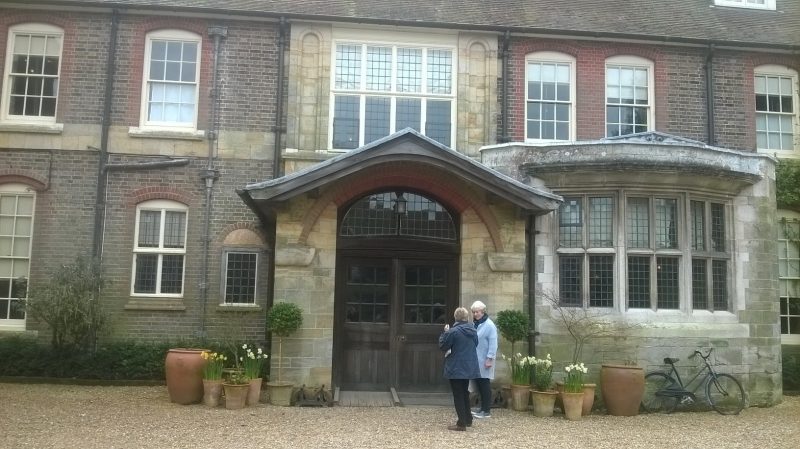The U3A organised a great educational (for me at least) outing to Sackville Village (a Jacobean Almshouse) and Standen National Trust in East Grinstead on Wednesday, March 29. We were about 30 willing adult Rye students. Our first stop was Sackville village where volunteers received us with lovely tea/coffee and cake.

We were told a little of the history before being taking around the house which had an inner well-kept courtyard, leading to the chapel, dining area and the flats the elderly lived in.
Calling the complex a ‘college’ is confusing as it was never meant to be what we know as a college but it was built as an almshouse for the poor nearly 400 years ago. The money to do this was left in a will of Robert Sackville, Earl of Dorset, in 1609. He was given a special chair, engraved RS 1659 and the myth is that several royals have sat on it over the years.
Part of the building was used for overnight accommodation for the Sackville family when they visited. Over the years the building has been modified but is still used for ‘deserving’ older people, and a warden lives in the wing which the family used to occupy. It is a charitable foundation operating according to an Act of Parliament, 1624 and Royal Charter of 1631.

This is where the Victorian Hymnologist, Dr John Mason Neale was a warden between 1846-1866 and wrote many hymns including ‘Good King Wenceslas’. He also founded for the poor the first Anglican sisterhood of St Margaret. Dr John Mason Neale was of course one of many wardens with his name inscribed on the tablet which mentioned them all and the Earls of Dorset.
After two hours of interesting history we were driven to Standen National Trust not far away. Some of us had lunch in the beautiful barn cafe while others visited the house and gardens or the shop.

The inside of the house was steeped in history with wonderful old furniture and art. The house was built between 1891-94 as a country home for James and Margaret Beale and their seven children.The Beale’s were one of a number of prominent families from Birmingham who had prospered during the city’s manufacturing booms and in 1870 relocated to London.
They were introduced to Philip Webb, a well known architect, who often drew inspiration from art, landscapes and historic buildings. Despite these influences, Standen was built as a comfortable and thoroughly modern home with electricity and central heating. The home remained in the Beale family for nearly 80 years until Helen Beale, last surviving daughter, bequeathed the house, the contents and 360 acre of woodland to the National Trust in 1972.

We were rather lucky for two reasons. There was the most colourful and beautiful exhibition of mosaics, quilts, embroidery and rugs by Kaffe Fassett. He has exhibited in the V&A and was featured in Vogue as well as creating a medal winning garden for the Chelsea Flower show in 1998. He is well worth checking out. Secondly, we heard, walking through the rooms, this wonderful piano playing.
Curiosity led me to a grand piano with a 10 year old producing the most gentle sounds, not interested at all in the people who stopped and listened in wonder. His mother said that if he could he would play all and everyday, a natural.
A brilliant outing for art, history and good company.
Photos by Heidi Foster



